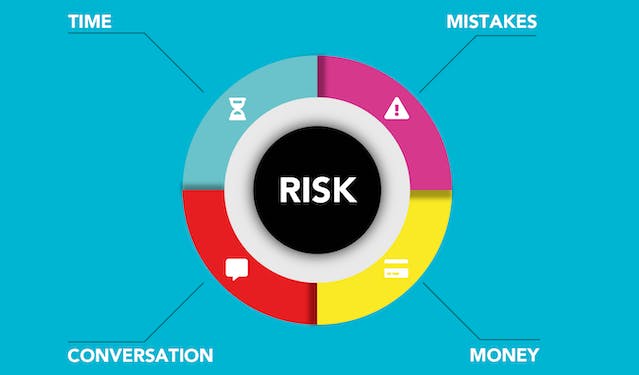Introduction
“Making money online requires navigating various payment avenues, especially for businesses labelled ‘high-risk.’ Understanding high risk merchant account at highriskpay.com is crucial for success. In this article, we’ll explore the ins and outs of these accounts, from setup to benefits, helping you optimize your online earning potential.”
2: Setting Up a High-Risk Merchant Account
1. Understanding the Process:
High-risk merchant account setup involves specific steps. Start by researching providers catering to high-risk businesses. Each provider may have varying criteria and application processes. Be prepared to provide detailed documentation.
2. Application Requirements:
Expect to submit essential documents like business registration, tax records, and bank statements. These documents help providers assess your business’s financial stability and legitimacy.
3. Completing the Application:
Carefully fill out the application form, ensuring accuracy. Highlight your business’s strengths and mitigating factors for any perceived risks.
4. Review and Approval:
After submission, the provider reviews your application. Approval timelines differ but typically involve a thorough assessment of risk factors associated with your business.
5. Integration and Implementation:
Once approved, integrate the merchant account into your payment system. Configure gateways and processes, ensuring seamless transactions.
6. Compliance and Regulations:
Ensure compliance with regulations and guidelines specific to your industry. High-risk businesses often have additional compliance measures to adhere to, ensuring long-term account stability.
7. Customer Support and Services:
Understand the Support and services offered by the provider. Robust customer service ensures smoother operations and troubleshooting when needed.
8. Monitoring and Optimizing:
Regularly monitor account activity and optimize settings. Adjust fraud prevention measures and transaction limits to suit your business’s evolving needs.
9. Scaling and Growth:
As your business expands, reassess your merchant account needs. Explore options for scaling services and increasing processing capabilities to accommodate growth.
10. Evaluating Provider Performance:
Continuously evaluate your provider’s performance. Consider transaction fees, reliability, and adaptability to ensure your choice aligns with your business goals.
Setting up a high-risk merchant account demands thorough preparation, attention to detail, and ongoing monitoring to ensure smooth and secure financial transactions for your online ventures.
3: Differences Between High and Low-Risk Merchant Accounts

1. Risk Assessment Criteria:
- Explore the criteria used to categorize businesses as high or low risk. Factors like industry type, transaction volume, and chargeback history contribute to this classification.
2. Approval Processes:
- Highlight the variance in approval processes. Low-risk accounts typically face less stringent Scrutiny compared to high-risk ones. Understand the implications of application timelines.
3. Fee Structures and Rates:
- Contrast fee structures between high and low-risk accounts. High-risk accounts often incur higher fees and transaction rates due to perceived risk.
4. Security Measures:
- Evaluate security measures provided by both account types. High-risk accounts often offer robust fraud prevention tools tailored to mitigate higher risks.
5. Flexibility in Services:
- Assess the level of flexibility in the services offered. Low-risk accounts may provide more standardized services, while high-risk accounts offer more tailored solutions.
6. Impact on Business Viability:
- Discuss how the classification impacts a business’s viability. High-risk categorization might limit access to certain markets or financial services, affecting growth potential.
7. Longevity and Stability:
- Analyze the longevity and stability of both account types. Low-risk accounts may enjoy more extended relationships with financial institutions, while high-risk accounts might face periodic reviews.
8. Mitigating High-Risk Status:
- Explore strategies to mitigate high-risk status. Implementing stringent risk management practices and maintaining a clean transaction history can improve a business’s risk profile.
9. Industry-Specific Considerations:
- Delve into industry-specific differences in risk assessment. Certain industries inherently fall into high-risk categories, impacting their access to merchant services.
10. Decision-Making Factors:
- Summarize the key factors businesses must consider when choosing between high and low-risk accounts. Factors include cost-benefit analysis, growth projections, and risk tolerance.
Understanding the nuanced differences between high and low-risk merchant accounts empowers businesses to make informed decisions regarding their financial strategies, risk management practices, and potential growth trajectories in the online marketplace.
4: Choosing the Right Provider
1. Research and Comparison:
- Begin by researching multiple high-risk merchant account providers. Compare their offerings, fees, and services to align with your business needs.
2. Customization and Adaptability:
- Assess providers’ ability to tailor services to your business model. Look for flexibility in payment processing, gateways, and fraud prevention measures.
3. Reputation and Reliability:
- Evaluate the reputation and reliability of potential providers. Analyze customer reviews, industry reputation, and track record for consistency and trustworthiness.
4. Compliance and Security Measures:
- Prioritize providers adhering to stringent security standards and industry compliance. Ensure their measures align with your business’s security requirements.
5. Scalability and Growth Support:
- Consider a provider’s ability to scale alongside your business. Ensure they offer solutions that accommodate future growth and increased transaction volumes.
6. Fee Structures and Transparency:
- Scrutinize fee structures for transparency. Look for providers with clear fee breakdowns and a willingness to explain associated costs.
7. Customer Support and Services:
- Assess the quality of customer support. Prompt and reliable customer service addresses issues and ensures smooth operations.
8. Integration and Compatibility:
- Ensure seamless integration with your existing systems. Check for compatibility with your e-commerce platform, software, and preferred payment gateways.
9. Trial Period or Demo:
- Look for providers offering trial periods or demos. This allows firsthand experience with their services before committing long-term.
10. Contract Terms and Flexibility:
- Review contract terms carefully. Seek providers offering favourable terms and flexibility to adapt to changing business needs without severe penalties.
Choosing the right high-risk merchant account provider is pivotal for ensuring secure and efficient financial transactions. Careful consideration of various factors will empower businesses to make informed decisions aligning with their operational and growth objectives.
5: Benefits of High-Risk Merchant Accounts
1. Tailored Payment Processing:
- High-risk merchant accounts offer customized payment processing solutions suited to the specific needs of high-risk businesses. This includes accommodating higher transaction volumes and diverse payment methods.
2. Advanced Fraud Prevention:
- These accounts often provide robust fraud detection and prevention tools. They employ sophisticated measures to mitigate risks associated with high-risk transactions.
3. Flexibility and Adaptability:
- High-risk merchant accounts are adaptable to the unique requirements of different industries. They offer tailored solutions that can evolve with the changing needs of businesses.
4. Access to Higher Processing Limits:
- Compared to low-risk accounts, high-risk merchant accounts typically offer higher processing limits. This enables high-risk businesses to handle larger transaction volumes.
5. Support for High-Risk Industries:
- Industries labelled as high-risk benefit from specialized services catering to their specific needs, allowing them to access financial services that might be limited otherwise.
6. Enhanced Customer Experience:
- These accounts often provide smoother transaction experiences for customers, ensuring a seamless payment process and improving overall satisfaction.
7. Reduced Risk of Account Closure:
- Despite the higher risk profile, high-risk merchant accounts often provide measures to reduce the likelihood of sudden account closure, offering stability to businesses.
8. Improved Transaction Approval Rates:
- High-risk merchant accounts may have higher transaction approval rates, minimizing the chances of declined transactions due to risk-related concerns.
9. Customized Services for Risk Mitigation:
- Providers of high-risk accounts offer tailored risk mitigation services, aiding businesses in managing and minimizing risks associated with their industry type.
10. Compliance Assistance:
- High-risk merchant account providers often assist businesses in adhering to industry regulations and compliance standards, ensuring legal and operational stability.
Embracing a high-risk merchant account can provide numerous benefits, including tailored payment solutions, enhanced security measures, and specialized services catering to industries labelled as high-risk. Understanding these advantages can help businesses capitalize on their potential for online success.
6: Industry Insights

1. Understanding High-Risk Industry Categories:
- Explore industries commonly categorized as high-risk, such as gambling, adult entertainment, and pharmaceuticals. Highlight the specific risk factors associated with each.
2. Impact on Account Classification:
- Discuss how the industry type influences account classification. Certain industries inherently face higher risk perceptions due to regulatory Scrutiny or chargeback potentials.
3. Tailoring Services to Industry Needs:
- High-risk merchant account providers offer specialized services catering to specific industries. Discuss how these services are customized to meet these industries’ unique needs and challenges.
4. Risk Mitigation Strategies:
- Delve into industry-specific risk mitigation strategies. For instance, gambling industries might employ different fraud prevention measures than e-commerce businesses.
5. Regulatory Compliance Challenges:
- Highlight regulatory challenges faced by high-risk industries. These businesses often navigate complex legal landscapes and must comply with stringent requirements.
6. Transaction Volume and Patterns:
- Analyze transaction patterns in high-risk industries. Some industries might experience higher transaction volumes or irregularities that require specialized processing solutions.
7. Challenges and Opportunities:
- Discuss both the challenges and opportunities unique to high-risk industries. Despite facing obstacles, these industries often present lucrative opportunities for businesses willing to navigate complexities.
8. Long-Term Viability and Stability:
- Assess the long-term viability and stability of high-risk industries within the online marketplace. Understand how market trends and regulatory changes impact these industries’ prospects.
9. Provider Expertise in High-Risk Sectors:
- Consider the expertise of merchant account providers in serving specific high-risk industries. Evaluate providers’ track records in supporting businesses within these sectors.
10. Strategies for Success:
- Summarize effective strategies for success within high-risk industries. Highlight the importance of leveraging specialized services and robust risk management practices to thrive in these sectors.
Understanding the nuances and intricacies of high-risk industries provides businesses with tailored insights and strategies necessary to navigate challenges, capitalize on opportunities, and succeed within these specific sectors in the online marketplace.
7: Pros and Cons of High-Risk Merchant Accounts
- Pros of High-Risk Merchant Accounts:
**a. Access to Services:**
– High-risk accounts provide access to essential financial services that might otherwise be inaccessible to businesses labelled as high-risk.
**b. Tailored Solutions:**
– These accounts offer customized solutions, including higher processing limits and specialized fraud prevention tools, catering to the unique needs of high-risk businesses.
**c. Industry-Specific Support:**
– High-risk merchant account providers often understand and cater to specific industries, offering tailored services and compliance assistance.
**d. Enhanced Security Measures:**
– Robust fraud prevention measures and advanced security protocols mitigate risks associated with high-risk transactions, safeguarding businesses and customers.
- Cons of High-Risk Merchant Accounts:
**a. Higher Fees and Rates:**
– High-risk accounts usually incur higher fees and transaction rates due to perceived risk, potentially impacting profit margins.
**b. Limited Options:**
– Some financial institutions might hesitate to provide services to high-risk businesses, limiting the pool of available providers.
**c. Stricter Terms and Conditions:**
– Contracts for high-risk accounts may come with stricter terms and conditions, making adapting to changing business needs challenging.
**d. Regulatory Scrutiny:**
– High-risk businesses often face increased regulatory Scrutiny, requiring stringent compliance measures that can be time-consuming and resource-intensive.
3. Balance and Decision-Making:
– Emphasize the importance of balancing the advantages and disadvantages when considering a high-risk merchant account. Businesses must weigh the benefits against the associated costs and limitations.
4. Mitigating Challenges:
- Discuss strategies for mitigating the challenges associated with high-risk accounts. This includes thorough research, negotiating favourable terms, and implementing effective risk management practices.
5. Making Informed Choices:
- Encourage businesses to make informed decisions by understanding the trade-offs and evaluating whether the benefits outweigh the drawbacks based on their specific operational requirements and risk tolerance.
It is understanding both the advantages and drawbacks of high-risk merchant accounts empowers businesses to make informed decisions, enabling them to leverage the benefits while mitigating the challenges associated with operating in high-risk sectors within the online marketplace.
8: Optimizing High-Risk Merchant Accounts

1. Maximizing Processing Limits:
- Understand your provider’s processing limits and optimize them according to your business needs. Regularly review and request increases when necessary.
2. Customizing Fraud Protection:
- Tailor fraud prevention measures to match your business’s transaction patterns. Adjust settings to balance security and transaction approval rates effectively.
3. Monitoring Transaction Activity:
- Regularly monitor transaction activity for irregularities or signs of potential risks. Implement alerts or automated systems to flag suspicious transactions.
4. Updating Security Protocols:
- Stay updated with the latest security protocols and compliance standards. Ensure your system aligns with industry best practices to mitigate risks effectively.
5. Reviewing Chargeback Processes:
- Establish efficient chargeback management procedures. Promptly respond to and resolve disputes to minimize chargeback ratios.
6. Optimizing Payment Gateway Integration:
- Ensure seamless integration of payment gateways with your system. Optimize the checkout process for customers to minimize transaction abandonment.
7. Regular Account Reviews:
- Periodically review your high-risk merchant account performance. Assess transaction trends, account stability, and the effectiveness of implemented risk management strategies.
8. Collaboration with Provider Support:
- Engage proactively with your provider’s support team. Seek guidance on optimizing account settings and leveraging available tools for better risk management.
9. Continuous Risk Assessment:
- Conduct ongoing risk assessments. Regularly evaluate potential threats and adjust risk mitigation strategies accordingly.
10. Adapting to Business Growth:
- Ensure your merchant account can scale with business growth. Review and update account settings and limits as transaction volumes increase.
Optimizing a high-risk merchant account involves continually fine-tuning settings, monitoring transactions, and staying abreast of evolving security measures. By implementing these strategies, businesses can maximize the efficiency and security of their accounts, ensuring smooth operations and reduced risk exposure.
9: Enhancing Customer Experience
1. Streamlined Payment Processes:
- Implement smooth and user-friendly payment processes. Simplify checkout procedures to minimize steps and reduce customer effort.
2. Diverse Payment Options:
- Offer a variety of payment methods to cater to diverse customer preferences. Ensure flexibility in payment choices to enhance convenience.
3. Transparent Pricing and Policies:
- Communicate pricing structures and policies clearly to customers. Avoid hidden fees or ambiguous terms that could lead to misunderstandings.
4. Reliable Customer Support:
- Provide accessible and responsive customer support channels. Promptly address queries or concerns to foster trust and satisfaction.
5. Secure Transactions:
- Emphasize the security measures in place for customer transactions. Highlight encryption protocols and fraud prevention practices to instil confidence.
6. Personalized Services:
- Consider personalized services where possible. Tailor offerings based on customer behaviour or preferences for a more engaging experience.
7. Feedback and Improvement:
- Encourage customer feedback and act upon it. Use insights to improve services and address pain points to enhance overall satisfaction.
8. Mobile Optimization:
- Optimize payment processes for mobile devices. Ensure a seamless and responsive experience across various devices for on-the-go transactions.
9. Loyalty Programs or Incentives:
- Implement loyalty programs or incentives to reward customer loyalty. Encourage repeat business and enhance customer retention.
10. Continuous Improvement:
- Embrace a culture of continuous improvement. Regularly assess and upgrade customer experience strategies to stay ahead in the competitive landscape.
Enhancing the customer experience in online transactions is vital for building trust, fostering loyalty, and ensuring repeated engagement. Prioritizing seamless processes, clear communication and customer-centric strategies contribute significantly to overall business success in the digital realm.
10: Final Considerations
1. Comprehensive Assessment:
- Encourage businesses to comprehensively assess their specific needs, risk tolerance, and growth projections before committing to a high-risk merchant account.
2. Consultation and Expert Advice:
- Suggest seeking consultation or advice from industry experts or financial advisors. Their insights can offer valuable perspectives for decision-making.
3. Understanding Long-Term Goals:
- Emphasize the importance of aligning the choice of a high-risk merchant account with long-term business goals. Consider scalability and future needs.
4. Risk Management Strategies:
- Stress the significance of robust risk management strategies. Ensure businesses are prepared to handle potential risks associated with high-risk accounts.
5. Contract Evaluation:
- Encourage a thorough evaluation of contract terms and conditions. Seek clarity on fees, services, cancellation policies, and potential penalties.
6. Trial Period Consideration:
- If available, advocate for utilizing trial periods or demos. This allows businesses to assess the service firsthand before making a long-term commitment.
7. Continuous Review and Adaptation:
- Highlight the need for continuous review and adaptation. Regularly assess the performance of the chosen high-risk merchant account and adjust strategies accordingly.
8. Compliance and Legal Considerations:
- Emphasize adherence to legal and compliance requirements. Ensure the chosen provider aligns with industry regulations and standards.
9. Diversification of Services:
- Consider diversifying financial services to mitigate risk. Explore multiple providers or alternative financial solutions to spread risk exposure.
10. Decision Confidence:
- Conclude by empowering businesses to make informed decisions confidently. Choosing a high-risk merchant account involves weighing various factors to optimize financial operations in the online landscape.
Encourage businesses to approach the selection of a high-risk merchant account thoughtfully and strategically. By considering these final considerations, companies can navigate the complexities of high-risk accounts more effectively and make decisions aligned with their objectives and risk tolerance.
In conclusion, making money online is intricately linked with the judicious selection and management of high-risk merchant accounts. Understanding the nuances of these accounts, from their setup to leveraging their benefits, is pivotal for businesses aiming to thrive in the digital marketplace. By delving into the differences between high and low-risk accounts, choosing the right provider, and optimizing account functionality, businesses can harness the tailored solutions offered by high-risk merchant accounts. Balancing the advantages with potential drawbacks, implementing robust risk management strategies, and prioritizing customer satisfaction are the pillars of success in navigating the complexities of online high-risk transactions. Ultimately, informed decisions grounded in thorough assessments and adaptability are key to maximizing the potential of high-risk merchant accounts and driving sustained online financial success.
Q: What is a high-risk merchant account, and why is it important for online businesses?
A: A high-risk merchant account is designed for businesses deemed riskier by financial institutions due to factors like industry type, high chargeback potential, or regulatory Scrutiny. Online companies in such categories must access payment processing services tailored to their needs, offering higher transaction limits and specialized fraud prevention tools.
Q: How do I set up a high risk merchant account at highriskpay.com?
A: Setting up a high-risk merchant account involves thorough research of providers catering to high-risk businesses. Prepare necessary documentation like business registration, tax records, and bank statements. Fill out the application accurately, highlighting business strengths, and comply with stringent security and compliance measures.
Q: What are the differences between high-risk and low-risk merchant accounts?
A: High-risk accounts typically have stricter approval processes, higher fees, and specialized security measures due to perceived risk. Low-risk accounts often have easier approval, lower costs, and less technical services, catering to businesses with lower-risk profiles.
Q: How do I choose the right high-risk merchant account provider?
A: Research various providers, comparing their services, fees, and reliability. Look for customization options, strong security measures, regulation compliance, scalability, transparent fee structures, and responsive customer support.
Q: What are the benefits of having a high risk merchant account at highriskpay.com?
A: Benefits include tailored payment processing, advanced fraud prevention, higher processing limits, industry-specific Support, enhanced security, and reduced risk of account closure.
Q: Are there any downsides to having a high risk merchant account at highriskpay.com?
A: Yes, downsides may include higher fees and rates, limited options for providers, stricter contract terms, and increased regulatory Scrutiny, which might require more compliance efforts.
Q: How can I optimize my high risk merchant account at highriskpay.com?
A: Optimization involves maximizing processing limits, customizing fraud protection, monitoring transactions, updating security protocols, reviewing chargeback processes, and collaborating with provider support for efficient management.
Q: How can I enhance customer experience with a high risk merchant account at highriskpay.com?
A: Provide streamlined payment processes, diverse payment options, transparent pricing, reliable customer support, secure transactions, personalized services, and continuously seek feedback for improvement.
Q: What should I consider before choosing a high risk merchant account at highriskpay.com?
A: Consider your business needs, long-term goals, risk management strategies, contract terms, trial periods, compliance requirements, service diversification, and confidence in informed decision-making.
Q: What’s the significance of understanding industry insights regarding high risk merchant account at highriskpay.com?
A: Understanding specific industries labelled as high-risk helps tailor services, strategize risk mitigation, navigate regulatory challenges, and recognize opportunities unique to those sectors. It aids in making informed decisions for businesses within these industries.





